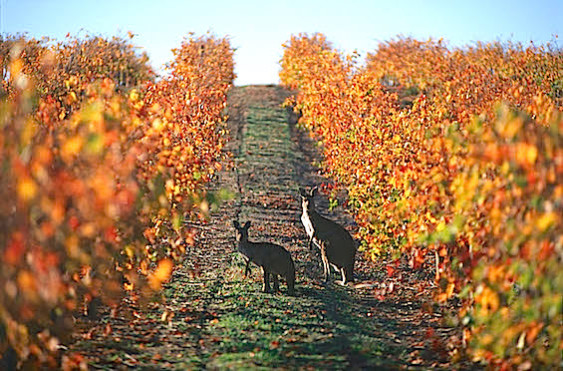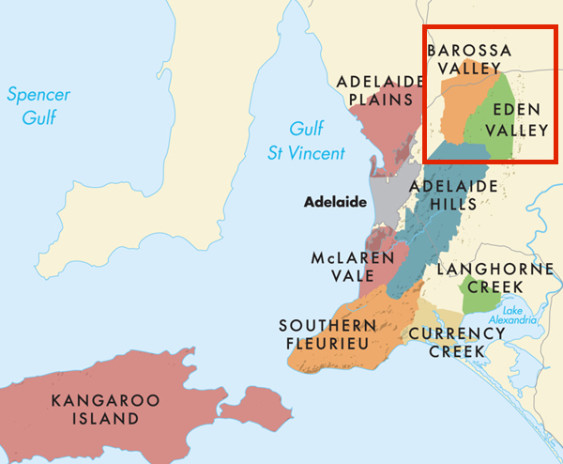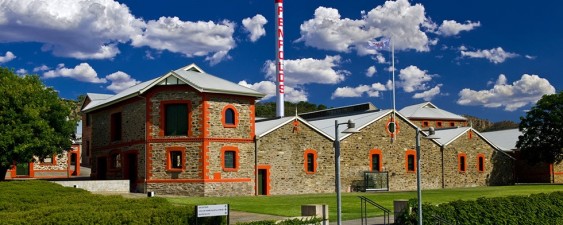Though we’re just enjoying the first stretch of spring in the northern hemisphere, down in the southern hemisphere, it is autumn. That means they’re getting ready for the wine harvest in regions from Mendoza to Marlborough, as well as in what has become one of the world’s most famous wine areas, Australia’s Barossa Valley

Keep the ‘roos away from the grapes! Image source: Drink Me Mag.
I’ve actually been lucky enough to visit the Barossa several times over the past few years. But rather than tell you what I know about it, on my last trip down there, I turned to a good friend and expert to do the hard work for me. Her name is Mary Anne Kennedy, and she runs a tour and travel company called A Taste of South Australia that creates bespoke itineraries exploring the amazing food and wine experiences of South Australia.
Before we got started on a day of wine tasting, she took me to a little spot looking out over the Barossa Valley so we could get the lay of the land and hear a little bit more about just what makes this such a fantastic place to produce wine. (I apologize for some of the sound in the video – it was a busy day up there with a motorcycle club making its way through – that’s Australia, mate!)
Just to give you some bearings, Barossa is just about an hour northwest from Adelaide in the state of South Australia which, incidentally, was the only Australian state to be completely settled by free settlers. So unlike the rest of the country, it was never part of a penal colony.
As Mary Anne mentions, though the Barossa took on an outsize role on the world wine stage around the 1990s and early 2000s, with hugely popular releases, the history of winemaking in the area actually dates back much further. To 1842 to be exact, when German settlers started planting grapes and making wine. It also happens to have some of the oldest productive vines in the world, and I’ve personally seen some that date to the 1860s.

The Barossa and Eden Valleys are just about an hour away from Adelaide. Image source: Henschke.
The southern end of the valley is the Lyndoch area, with stonier soils, earlier-ripening grapes and wines that tend to have a more “steely” character. Heading north from there, you get to Tanunda, which is the area’s main town, before arriving in Nuriootpa (seriously, that’s the name), where you’ll find one of the Australian wine industry’s biggest names, Penfolds. Just a bit farther north from there is the end of the valley, where you can visit another heavy hitter, Wolf Blass.
It’s really right in the middle there, though, in the areas around Tanunda, Marananga and Nuriootpa, that Germans settlers first made wines, and where you find some of the area’s most famous producers including Torbreck and Two Hands. This is a great area from Shiraz, but as Mary Anne tells it, wineries are also starting to look into some other warm-climate varieties such as Tempranillo.

The Barossa is home to some of Australia’s biggest wineries, including Penfolds. Image source: Penfolds.
Less well known, but still part of the larger Barossa area, is the Eden Valley. It was on the other side of the camera when we were filming, and is known for cooler-climate varieties and white wines, including Riesling and Yalumba’s famous Viogniers.
And we haven’t even gotten into South Australia’s other wine regions like the Clare Valley, the Adelaide Hills and McLaren Vale. But we will in future posts! For now, that’s just a quick look at the layout of the Barossa. Stay tuned for more coverage of where to eat, drink and stay. In the meantime, the Barossa’s visitor’s page is a great, comprehensive resource for planning your own trip down there.
Have any questions about the Barossa or Australian wine in general? Feel free to tweet me @clustercrush!

